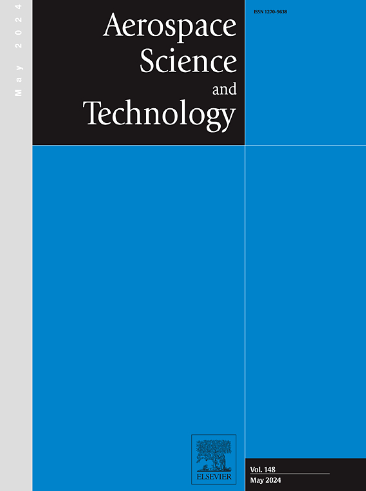Structural design and performance analysis of a novel helium heater for precooled air-breathing combined engines
IF 5
1区 工程技术
Q1 ENGINEERING, AEROSPACE
引用次数: 0
Abstract
To address the issues of high weight and structural complexity of the helium heater in precooled combined engines, a novel design of combustion heat exchange integrated helium heater is put forward. A numerical model validated by experimental data is developed to predict its performance. The flow and heat transfer characteristics of the helium heater are analyzed in detail. The crucial influence of structural design parameters on helium heater performance is thoroughly revealed. And the variations of heater performance with deviations in working fluid parameters are explored. The conclusions can be made as follows: The proposed design integrates the combustion and heat exchange components, eliminating the need for complex gas delivery pipelines and active thermal protection systems, thereby reducing weight and complexity. The heat transfer coefficient increases as the helium is heated. The difference between the maximum and minimum values of the heat transfer coefficient can reach up to 1500 W/m²·K. The transverse pitch has a greater impact on the heat transfer and flow resistance performance than the longitudinal pitch, with an optimal transverse pitch (S1/d) of 2.0. As the number of radial layers in the helium heater increases, the total heat transfer coefficient is accordingly enhanced, which in turn reduces the required number of axial layers. The reduction in axial layers has a greater impact than the increase in radial layers, resulting in a reduction in helium heater weight. Compared to the heat transfer coefficient, the total pressure recovery coefficient on the helium side is more sensitive to changes in helium flow rate. Considering the temperature tolerance of the walls, an excess air coefficient between 3.5 and 4 is recommended.
一种新型预冷吸气式组合发动机氦气加热器的结构设计与性能分析
针对预冷联合发动机中氦气加热器重量大、结构复杂的问题,提出了一种新型燃烧换热整体式氦气加热器设计方案。建立了经实验验证的数值模型来预测其性能。详细分析了氦气加热器的流动和传热特性。揭示了结构设计参数对氦气加热器性能的重要影响。探讨了不同工质参数对加热器性能的影响。结论如下:本设计集成了燃烧和换热组件,无需复杂的输气管道和主动热保护系统,从而减轻了重量和复杂性。当氦被加热时,传热系数增大。换热系数的最大值与最小值之差可达1500 W/m²·K。横向节距对换热和阻流性能的影响大于纵向节距,最佳横向节距(S1/d)为2.0。随着氦气加热器径向层数的增加,总传热系数相应提高,从而减少了所需的轴向层数。轴向层数的减少比径向层数的增加有更大的影响,导致氦加热器重量的减少。与换热系数相比,氦气侧的总压恢复系数对氦气流量的变化更为敏感。考虑到墙体的耐温性,建议将多余空气系数设置在3.5 ~ 4之间。
本文章由计算机程序翻译,如有差异,请以英文原文为准。
求助全文
约1分钟内获得全文
求助全文
来源期刊

Aerospace Science and Technology
工程技术-工程:宇航
CiteScore
10.30
自引率
28.60%
发文量
654
审稿时长
54 days
期刊介绍:
Aerospace Science and Technology publishes articles of outstanding scientific quality. Each article is reviewed by two referees. The journal welcomes papers from a wide range of countries. This journal publishes original papers, review articles and short communications related to all fields of aerospace research, fundamental and applied, potential applications of which are clearly related to:
• The design and the manufacture of aircraft, helicopters, missiles, launchers and satellites
• The control of their environment
• The study of various systems they are involved in, as supports or as targets.
Authors are invited to submit papers on new advances in the following topics to aerospace applications:
• Fluid dynamics
• Energetics and propulsion
• Materials and structures
• Flight mechanics
• Navigation, guidance and control
• Acoustics
• Optics
• Electromagnetism and radar
• Signal and image processing
• Information processing
• Data fusion
• Decision aid
• Human behaviour
• Robotics and intelligent systems
• Complex system engineering.
Etc.
 求助内容:
求助内容: 应助结果提醒方式:
应助结果提醒方式:


